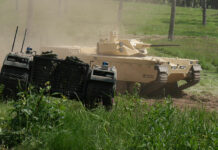Only a number of days after the UN passed a resolution calling Israel’s sovereignty over Jerusalem illegal, former US secretary of state James Baker demands Israel leave the Golan Heights. It appears, from the report, that the Golan Heights are being used by the Iraq Study Group as an inducement to obtain cooperative Syrian behavior on Iraq. As predicted, Syrian Foreign Minister Farouk a-Shara immediately expressed his country’s willingness to enter into peace negotiations with Israel, stating such a move is welcome. A-Shara stated Damascus is willing to reach an agreement with Israel with the understanding the Golan Heights must be returned to Syria to the last centimeter, as part of such an agreement. For Israel, such a move would spell strategic disaster. This assessment will deal ONLY with the military aspects of the Golan question, raised by the Baker-Hamilton report and intentionally ignore all political considerations pertaining to this critical issue.
The Geostrategic Status of the Golan Heights
Above the Sea of Galilee rises n escarpment, its height ranging from 800 to 100 meters altitude known as the Golan Heights, towering over the Jordan rift valley to its west. It covers a total area of some 900 square kilometers. These ancient hills were created by volcanic activity, pouring out from craters, covering the high plateau with layers of basalt, making cross-country movement difficult. The highest point is Mount Hermon, a multi-peaked mountain rising to 2814 meters at its peak, which dominates observation over the entire region up to the Damascus Basin to the east- only some 60 kilometers away. he so-called “Purple Line” established after the ceasefire of June 10th, 1967 provided an excellent line of defense for Israel, located mostly along the watershed and enabling long range observation posts from a line of volcanic hills, on which the IDF established strategic electronic surveillance stations. On the other hand, from pure strategic view, the same Golan Heights contribute almost nothing to the defense of Syria’s capital Damascus. A glimpse at the map indicates that due to topographical features to its west, Damascus can best be defended along the Awaj River near Sasa and the two stony deserts to the south, both impassable to military traffic. Any defense further west, including the Golan Heights can be outflanked, as the IDF did during the latter stages of the 1973 Yom Kippur War.
The Golan heights- Israel’s strategic Bulwark
Due to its geo-strategic topography, Israel’s northern border poses some serious anomalies to its defensive posture: What is known as the “Galilee Panhandle”, an area which pokes like a finger from the Hula valley northward up to the Lebanese border, is a curious geographical phenomenon, created as result of hasty, shortsighted decisions made by the French and British following their victory over the Ottoman empire after WW1. The facts of this political fiasco, are apparent to even the most impartial observer. On its west, the Panhandle leans on a mountain range, only partially under Israeli sovereignty, the rest is Lebanon. (Over this very ground was fought last summer’s Second Lebanon War, with disastrous consequences, partly due to topographical constraints) Only a mere 5000 to 7000 meters in width along its northern part, the Panhandle is dominated on its east by the towering Golan Heights, from which, pre-1967 Israeli settlements were constantly bombarded by Syrian artillery located on the overlooking slopes.
Under the present circumstances prevailing in this region, should Israel deprive itself of its most important strategic asset for a mere piece of paper, signed by a single leader, would be a strategic mistake, having serious consequences to any future negative change in Middle Eastern affairs. In fact, Syria’s national interests are focused not only on the Golan Heights, which represent only an insignificant part of its entire territory. Syria’s long-term strategic aims are to exert its hegemony over Lebanon and Israel’s northern territory and even part of northern Jordan, which it considers part of their strategic aspirations over a “Greater Syria” predominance.
One of the options being proposed by the Baker-Hamilton report is to place US forces to mentor a future Syria-Israel peace deal over the Golan Heights, following Israel’s withdrawal. Part of this would be US experts taking charge of the IDF monitoring stations on Mount Hermon and the overlooking border hills. As real-time intelligence in modern warfare is regarded imperative in early warning relinquishing these highly strategic assets, even under a friendly monitored replacement could become a crucial matter of national security. For example, During Operation Desert Storm, US intelligence on Iraqi Scud launch zones in western Iraq, vital to Israel, was denied even when Saddam’s missiles impacted on Tel Aviv. But there are other reasons for Israel’s reluctance to place US forces on the Golan. The presence of US forces in harms way to guard Israel against hostile infiltrations and subsequent preventive counter-guerrilla operations by the IDF could lead to unnecessary tension between the two allied nations.
In conclusion, the Golan Heights represents a vital strategic asset for Israel’s security, especially in view of the current political developments in the region. The danger of the so-called Shiite Crescent engulfing Israel from its north and north-eastern border, with a Hezbollah dominated and Iranian-backed Lebanese Government, places Israel, should it cede the Golan Heights to Syria, before a strategic disaster. Being defensive in its nature, the Golan Heights not only safeguards Israel’s north, but deters, by the IDF long range reach into the Damascus basin, from any offensive options, which Bashar Assad may consider to regain the Heights by force under an Iranian umbrella.
Further Reading: The Golan Heights Will Remain Israel’s Strategic Bulwark, May 2008
















